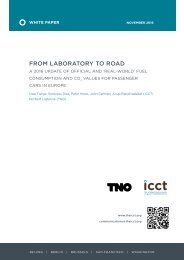Vol 55
Vol 55
Vol 55
- No tags were found...
Create successful ePaper yourself
Turn your PDF publications into a flip-book with our unique Google optimized e-Paper software.
ARCHAEOLOGY IN LONDON: ANNUALROUND-UP AND NEWS FOR 18<strong>55</strong>/6Barney SloaneThe London and Middlesex ArchaeologicalSociety is 150 years old this year. While theSociety has always tried to look forward ratherthan back (often difficult in the fields of historyand archaeology!), there is room, on occasion,for a pause and ponder about where we havecome from and how we got to where we are now.In this context, the less-visited sections of journalsand volumes, the 'proceedings' or 'notes' pages,as well as the indexed and thus well-read articles,often hide little-known gems provoking wonder,amusement, and reflection; the 1850s were yearsof no exception. This article therefore offers agentle trawl through the archaeological journals,reports, and newspapers available at the time ofour founding.Since the first provisional committee meetingto discuss the establishment of the Society tookplace in July 18<strong>55</strong>, and the first meeting of fullmembers in January 1856, I have drawn materialfrom both years. The results show at once (andunsurprisingly) that so very much has changed,and yet at the same time that some 'current' ideasand research themes in London and Middlesexarchaeology have very long pedigrees indeed. Thesummary comes in the form of a chronologicalcollation to show the range of interest in eachbroad archaeological period, and a news board thatlifts up some of the less well-known archaeologicalstories of the time. If the tone seems a little lighthearted,it is not meant to detract from thehugely valuable work of our past antiquaries bothin bringing to light lost wonders of the region'sarchaeology, and in making absolutely certainthat the climate was created, and has endured, forus to have a Society and a Transactions of which wecan be very proud. They should be rememberedwith very grateful affection.THE DISCOVERIESPrehistoricProbably the most widely reported and presentedwork was that of J Akerman at the great roundbarrow that formerly stood off Sandy Lane inTeddington. Already damaged by road widening,and threatened by further development in 1854,the barrow, then measuring 96ft (29.3m) acrossand 12ft Sin (3.7m) high, was subjected to whatwe might call a classic work of rescue archaeologyin advance of development impact. Akerman andhis team cut to the centre of the barrow, recordeda heap of calcined bones, and recovered a beautiful,intact bronze 'knife or dagger' as well assecondary burial evidence, worked flints and a'half-baked urn'. The event was marked by anarticle in Archaeologia (36, 1V5-6), and the knifewas exhibited widely at the Society of Antiquaries,LAMAS, and the Archaeological Association. Itformed the subject of a colour finds illustrationpublished in our Transactions (1, 140), with anapology that the technology of the day did not allowentirely accurate colour reproduction. For shame,editor! We also learn that so much exhibiting couldtake its toll on the artefacts: the knife was readilydisintegrating by the end of the year.The Thames, long renowned as a source of fineantiquities, in 18<strong>55</strong> yielded up to the founderand trustee of the London and Middlesex ArchaeologicalSociety, the Reverend Thomas Hugo,two fine 'celts' of black flint from Battersea, withothers from Blackfriars and Teddington {TransLondon Middlesex Archaeol Soc 1, 133).RomanNaturally, the greatest area of interest shown by



